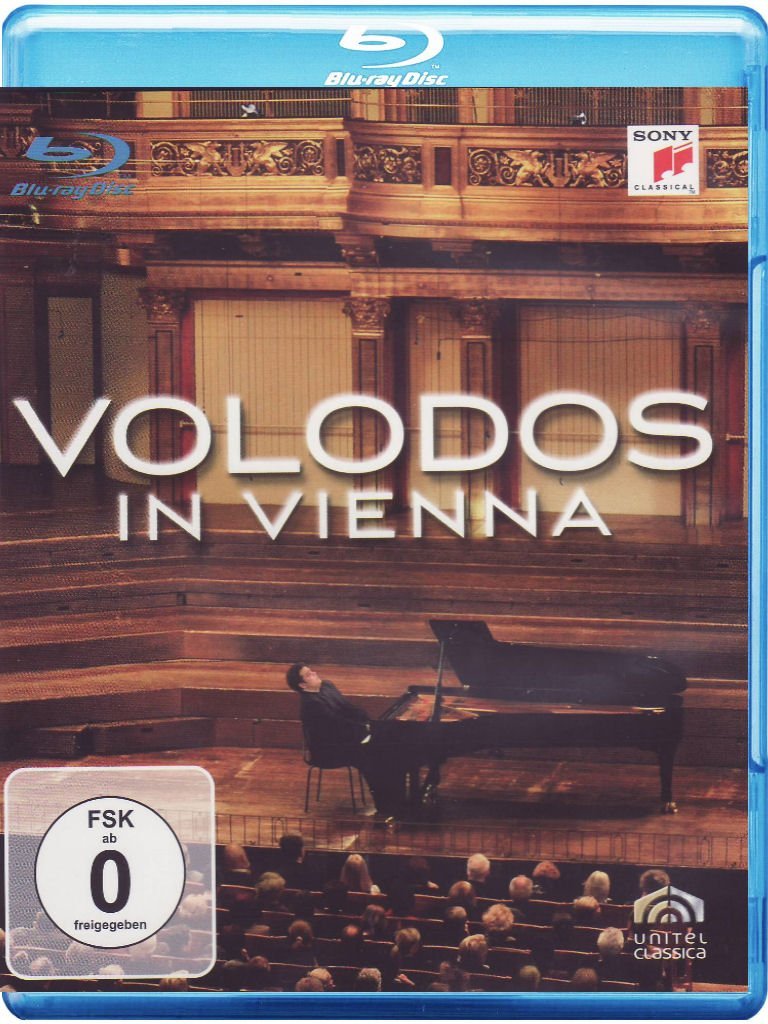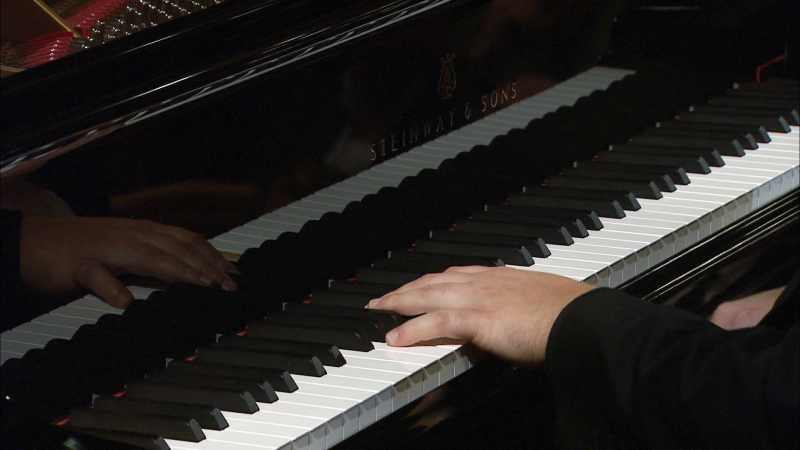
Volodos in Vienna piano recital. Arcadi Volodos plays the following pieces in 2009 at the Goldener Saal of the Musikverein in Vienna:
Scriabin: "Prélude in B flat minor op. 37/1"
Scriabin: "Prélude in B flat minor op. 11/16"
Scriabin: "Danse languide in B flat minor op. 51/4"
Scriabin: "Guirlandes in B flat minor op. 73/1"
Scriabin: "Feuillet d'album op. 45/1"
Scriabin: "Sonata in B flat minor No. 7 op. 64" ("Messe blanche")
Ravel Valses nobles et sentimentales (complete)
Schumann Waldszenen (Complete)
Liszt "Après une Lecture du Dante" from Années de Pèlerinage 2 (Dante Sonata)
J.S. Bach "Sicilienne" from D Minor Concerto
Tchaikovsky "Lullaby in A Storm" from Children's Songs
Gramophone magazine rated this performance in its CD version as the best instrumental recording of 2010. Directed for TV by Michael Beyer; the Recording Producer was Friedemann Engelbrecht (Teldex Studio Berlin); produced by Michael Brüggemann. Released 2010, disc has 5.1 Dolby Digital, a lossy technology rendered obsolete by the lossless sound formats used on most Blu-ray recordings. Grade: A-
In 1997-1999, the 25-year old, lean-and-mean-looking Volodos released several smash hit recital CDs. But after that his career seemed to falter as he got lost in the cloud of numerous gifted pianists. Then, considerably heavier, he got back in the spotlight again with the first piano recital on HDVD:
After warming up with some 2-minute préludes, Volodos tackles the Scriabin Messe blanche Sonata. I happen to have a CD of this, recorded by Marc-André Hamelin in 1995, which may be considered one of the definitive recording of Messe blanche in stereo high-fidelity sound. So I compared this to the Volodos version with and without the video picture. I was shocked to hear how limited and restrained my treasured Hamelin version sounds when compared to the Volodos report. I attribute this to three factors. First, surround sound is more full and vivid than the stereo sound. (Once again I'm surprised by much HDVD improves the sound as well as the pictures.) Second, Volodos is admired for both his accurate technique and his ability to wring poetry out every bar. He demonstrates this prowess in his performance of Messe blanche. Last, Volodos is expressive physically (constantly swaying about and making innumerable faces as if talking to himself). I think this makes an impression that supports what you hear even if you later turn off the video picture.
Later in the program, Volodos plays another of my favorites, the stupendous Liszt Dante Sonata from Years of Pilgrimage, Vol. 2. Here there's no need to compare the video to any CD. Volodos is in a different orbit as he threatens, with his hulking bulk and huge hands, to to destroy a Steinway grand. Awesome. (Liszt, they say, actually did break up pianos.)
This HDVD gives us some good examples of the problem of depth of field of focus (a technical subject understood only by expert photographers). There was a camera on the stage close to Volodos, and we get perfect-looking images from that left-side angle. Note in the 2 images below how the keyboard appears sharp and free of distortion:
Contrast the 2 images above to the image below taken from the right side of Volodos. This right-side shot was made from a camera much further away from the pianist than the images taken from his left side:
In the right-side image above, nothing seems to be sharply in focus. Also there is an optical illusion that the keyboard isn't rectangular. The keys further away seem longer than the keys in the foreground, which is the opposite of normal perspective. Why? The keys furthest away are the most out of focus, which makes them larger in the image.
Here's another right-side shot of the keyboard. Here the depth of field of focus is about as wide as the pianist's hand:
Depth of field of focus in location shooting is obviously one of the most daunting issues facing the videographer.
The rest of the program played by Volodos is very fine. I note that the concert lasts only 89 minutes. This would be appropriate for a CD, but I think it's a bit skimpy for a Blu-ray disc.
This is still one of my favorite HDVDs because the performance is so stirring. It was made in the most prestigious recital hall in the world featuring a leading pianist. But wonk James Kreh correctly points out that Sony should have provided Volodos with better sound. Sony should have used at least 48kHz/24-bit sampling technology (this performance would warrant going all the way to 96kHz/24-bit) and a lossless output format such as 5.0 dts-HD Master Audio. The lesser sound quality used by Sony was used well and beats my CDs easily. But on this website we don't seek the better---we go for the best.
With better sound, this would have been an "A+" recording. But for the shortcomings on both ends of the reproduction chain, I reduce the grade to "A-."
Sorry, Presto doesn’t carry this. It also appears this is becoming a collectors item.











